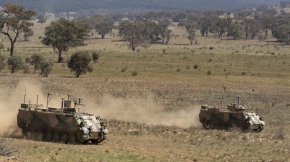So curious for those who know more about it and can comment, reading more on the Land 400 Ph3 competition between the Hanwha AS-21 Redback and the Reinmetall KF-41 Lynx.
In the earlier article I referenced on the Redback being sent for the test and evaluation phase of the competition there was an interesting quote
"Vice president An Byung-chul pointed to reductions in weight and belly protection as benefits of the variant"
South Korean defence manufacturer and Land 400 Phase 3 contender Hanwha Defense Co said Sunday it plans to deliver the prototypes of its 'Redback' armoured vehicle to Melbourne, as part of its bid fo

www.defenceconnect.com.au
Got me looking at the stated weights of both vehicles, obviously not going to find any open source material on either vehicles protection and their solutions, but they both appear to weight the same, guessing both are listed combat weights ?
My question is, I noticed right from the start that the KF-41 basically looked to have an extension/stretched back end for the additional dismounts to meet the requirement, but the wheelbase seems to have remained the same and has kept the 6 road wheels of the original KF-31.
The Redback however, being of a similar weight, width and length have a 7 road wheel wheelbase.
Are there any perceived advantages or disadvantages to either ? Does a 7 wheel track offer better load distribution and therefore better off road capability ? Depending on the distances between does that afford a better ability to traverse steps or ledges ? Trench distances etc
We don't know length of the tracks, width, contact patch etc, but does the extra road wheel offer any benefits in track wear or durability, throwing a track etc ?
Just curious
Cheers
 www.defenceconnect.com.au
www.defenceconnect.com.au






